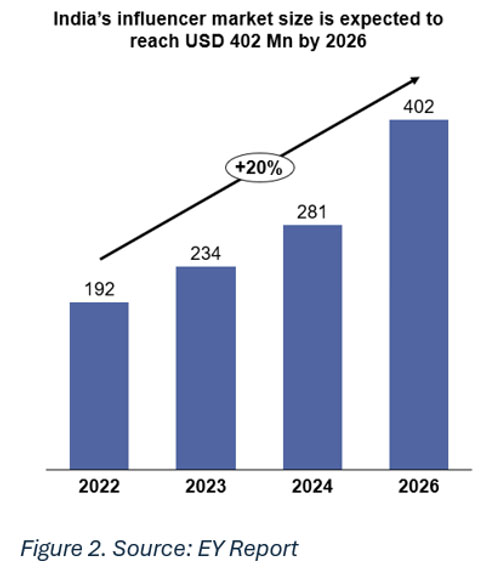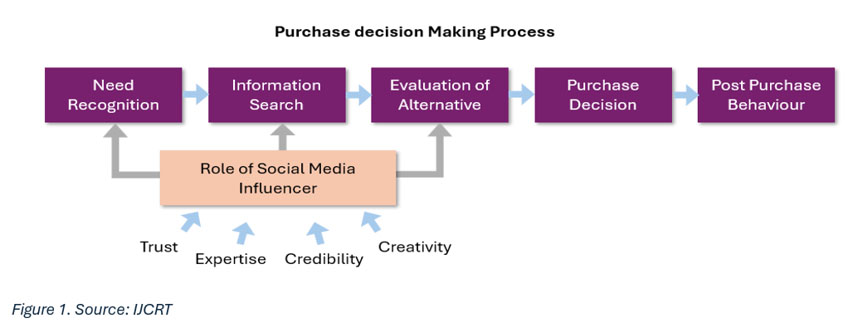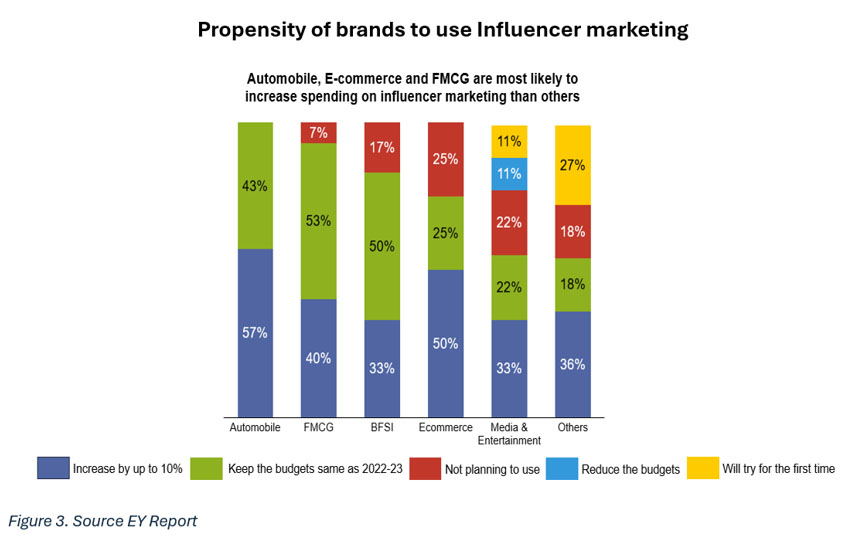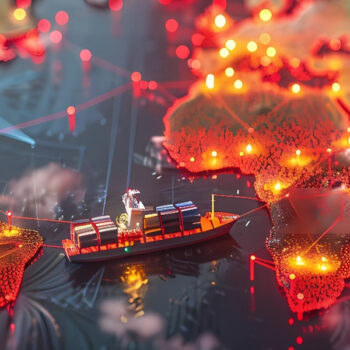Avalon Consulting’s Vishal Dhikale, Rajat Bansod and Pratyush Dash collaborate to explain that the creator economy in India is booming and is projected to hit USD 3.9 Bn by 2030. As digital access expands, influencers are redefining how brands engage consumers. Micro-influencers, offering authenticity and niche engagement, are fuelling this shift from traditional ads. From brand deals to platform monetization, creators are transforming marketing strategies. Despite challenges, influencer marketing is poised for continued growth with rising regulations and evolving consumer behaviour.
Rise of creators
In 2023, the market size of India’s creator economy was estimated at USD 976 Mn, and it is projected to reach USD 3.9 Bn by 2030 with a CAGR of 22% from 2023 to 2030.
Content creators use a variety of formats to engage with their followers, each offering unique advantages. Popular formats include short-form videos, images, stories, long-form videos, text, blogs, audio, GIFs, and memes. Among these, short-form videos stand out due to their immense popularity and high demand.
There are various sources through which creators make their revenue including brand deals, ad-share revenue, platform-specific monetization programs, starting their own brand, affiliate links, exclusive content, monetary tips, courses, subscriptions, consulting, merchandising, events and meetups.
Between 2019 and 2021, YouTube creators earned around USD 30 Bn from ads, while brands increasingly collaborated with them on long-term content. Subscription platforms like Patreon and Substack offer creators steady income, with over 8 million patrons on Patreon. Live tipping on Twitch and YouTube has grown popular, with Twitch streamers receiving USD 2.6 Bn in tips during 2020 and 2021.
Growth Drivers of the Creator Economy
India’s digital marketing landscape has shown fast growth, driven by increasing internet access and rising smartphone adoption.
The “Jio Effect” reshaped digital marketing in India by increasing internet access and online activity, with nearly half of the population now online. COVID-19 further accelerated the creator economy as lockdowns led to higher audience engagement and brands boosted investment in digital marketing. Both factors fueled the growth of creators, who saw social media as a lucrative platform for showcasing skills and earning.
Trends on time spent on social media
As of January 2024, internet users in India aged 16 to 64 spent an average of 2 hours and 26 minutes daily on social media. GWI reports that users aged 16-24 use 7.7 platforms per month, while those aged 25-34 use 7.9. Instagram was the most popular platform in 2023, with 74.7% of internet users and 516.92 million active users in India.
How social media influence purchase decisions?
People on social media often make purchase decisions influenced by trusted influencers who share near authentic and engaging content. Followers are inspired by their recommendations, leading them to explore suggested brands and products. If these align with their needs and budget, they are more likely to make a purchase, showcasing the significant impact influencers have on shaping consumer choices and driving buying decisions.
Why are brands shifting from traditional marketing to influencer marketing
This shift is driven by the search for authenticity, as consumers grow skeptical of traditional ads. Micro-influencers offer genuine, relatable content that truly connects with audiences.
Micro-influencers specialize in niche markets, making them valuable for brands targeting specific demographics. Their engaged followers enable brands to implement efficient marketing strategies that connect with targeted audiences.
Partnering with micro-influencers is cost-effective, offering lower fees and high engagement, making them appeal to brands of all sizes.
Micro-influencers offer creative, authentic content that resonates with their audience, capturing attention and aligning well with brand messaging.
This shift is evident by the fact that India’s influencer marketing sector is expected to reach a valuation of approximately USD 402 Mn by 2026, as per an EY report.

According to a survey done by EY, Automobile, E-commerce, and FMCG sectors are most likely to increase spending on influencer marketing, while other sectors show a mixed approach, with some planning to reduce budgets or not engage in influencer marketing at all.
Case studies
Nykaa’s influencer marketing for their Clay it Cool mask line featured beauty influencers sharing reviews and tutorials, creating buzz and engaging a wide audience, highlighting the impact of influencer partnerships (Instagram).
Audible is a top destination for audiobook enthusiasts. They partnered with YouTube influencers across gaming, style, and entertainment to promote their brand, generating over 83 million views and demonstrating the success of influencer collaborations in boosting engagement. (YouTube).
Challenges
Influencers face challenges like aligning brand deals with their niche, fair compensation, financial management, and burnout from constant content creation. Here, opportunities exist for marketing companies to create platforms that connect brands with creators, offer analytics, and support content production. Additionally, maintaining a loyal audience remains a continuous challenge in a competitive digital landscape.
Future of Influencer Marketing
Influencer marketing in India is set for significant growth due to rising digital literacy and social media use. However, the future will be influenced by evolving regulations focusing on transparency and consumer protection. Brands and influencers must adapt to these legal changes while executing effective campaigns. Navigating this regulatory landscape presents both opportunities and challenges, but with a focus on ethical practices, brands can successfully engage consumers and meet their marketing objectives.











